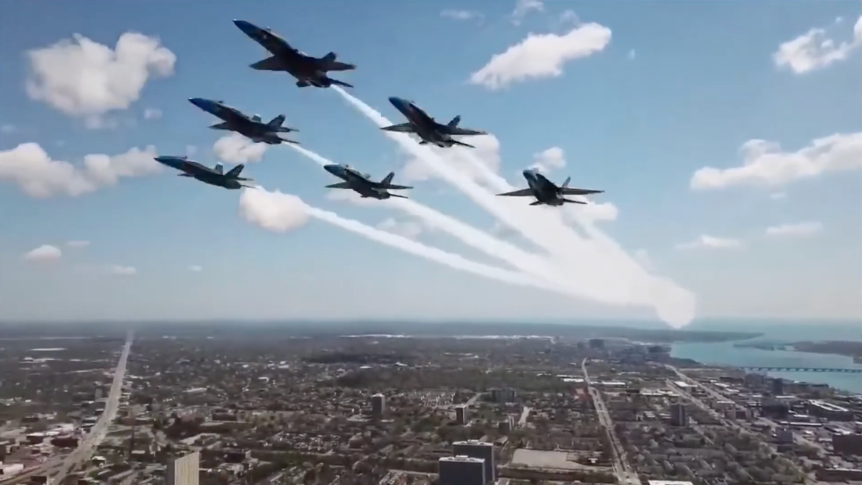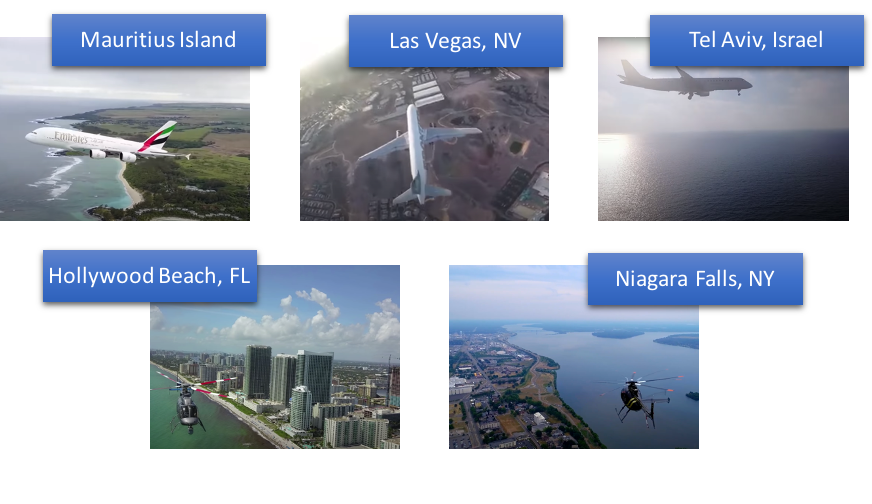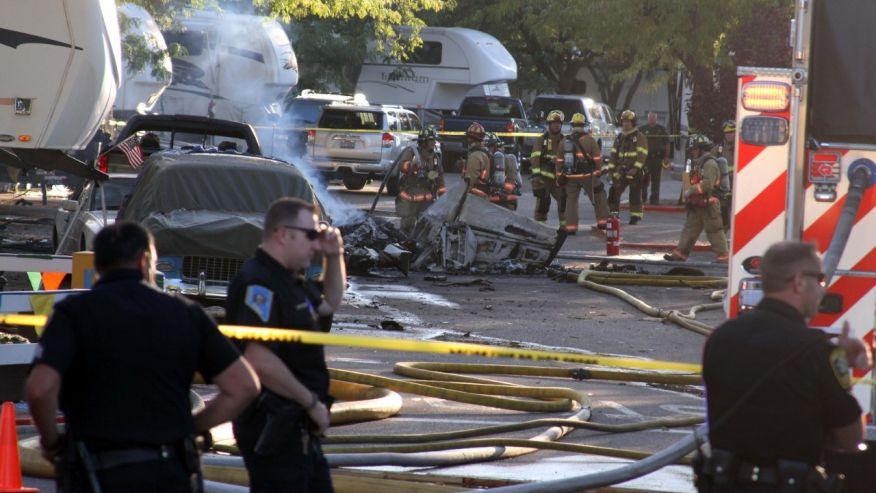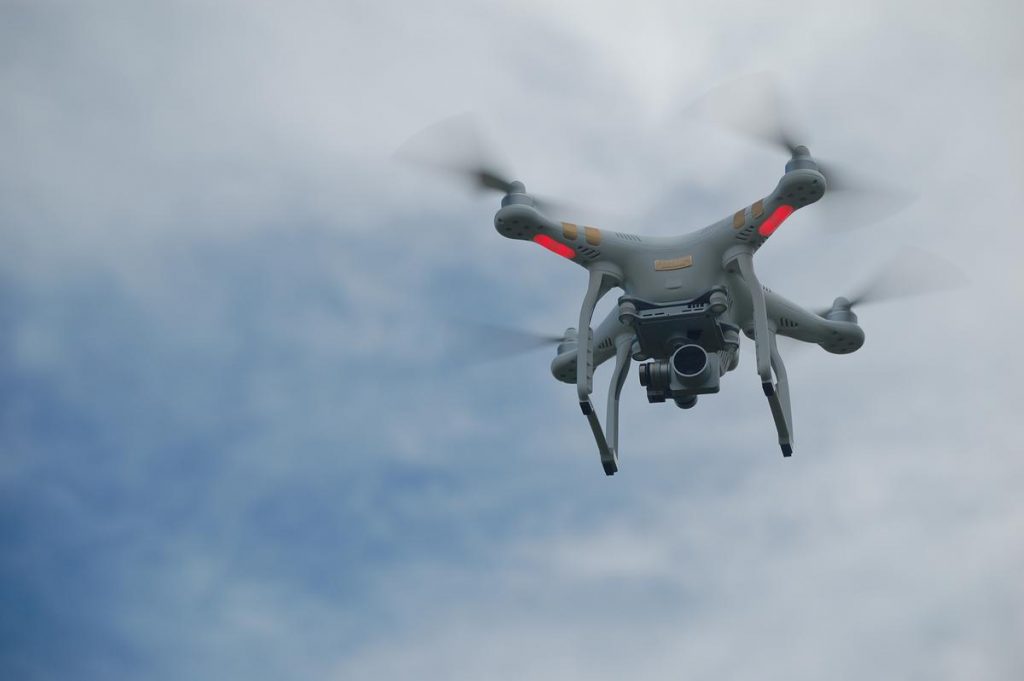sUAS Near Miss

On May 12th, at approximately 11:47 AM, the Blue Angels were performing a formation flyover in Detroit to honor first responders and medical staff battling COVID-19. The flyover was appropriately titled the “Detroit America Strong Flyover”.
In the total time of four minutes that the Blue Angels were operating over the city of Detroit, an individual in the area decided he wanted to grab some footage of the flyover with his DJI drone.
Although all of the footage found in the originally released video could be considered reckless endangerment, there was one shot in particular that left both the pilot and drone community outraged.
As the F/A-18 Hornet located on the far right of the image above crosses the frame, it misses the drone by mere feet.
Not surprisingly, the original Instagram account which uploaded the footage was deleted shortly after the video went viral.
This is not the first time a near-miss incident has occurred (that has found it’s way onto the internet) within recent years:

There were at least three rules broken by the operator of the flight above. The first being that the drone operator likely exceed the 400’ AGL altitude limit; a guideline prior to 2018 but now a hard limit. Secondly, operating a drone in a careless or reckless manner, and third, not giving way to manned aircraft.
We could write on explaining how reckless and dangerous the decisions made by this operator were, and how he put the lives of multiple parties (both the pilots in tight formation and any bystanders below) at risk. But we imagine that you as a reader of FLY8MA.com, a website for both manned and unmanned aviation education, most likely understand that the actions taken by this individual were reckless. Therefore, let’s focus on the more universal issue at hand; these events keep happening.
In a press release by Embry-Riddle Aeronautical University (ERAU) on May 21st of this year, researchers stated that their findings of a 30-day monitoring period near Daytona Beach International Airport in Florida, using a DJI AeroScope system capable of detecting and locating nearby DJI drones. “The vast majority of small unmanned aircraft systems (UAS) detected around Daytona Beach International Airport during a 30-day period in 2019 lacked approval from the U.S. Federal Aviation Administration (FAA), and more than one-third of those drones were flying higher than the law allows”.
Members of the public are, knowingly or unknowingly, operating small unmanned aerial systems outside of regulatory boundaries. While this certainly is concerning, the question remains: what’s the damage?
In recent years, the FAA has had more than 100 documented cases of recreational drone operations in or around wildfires. There are temporary flight restrictions (TFRs) in place to allow fire suppression aircraft to operate safely. When drones are operating recreationally in or near a wildfire, fire suppression aircraft can’t. This jeopardizes both efforts to contain the fire and potentially puts ground crews at risk.
Furthermore, within the US and Canada, we have had three confirmed drone strikes in recent years, spanning a wide category of aircraft. On September 21st, 2017, a U.S. Army Sikorsky Blackhawk was operating approximately 21 miles east of Staten Island, NY when the main rotor made contact with a DJI Phantom 4; creating a 1 and ½ inch dent on one of the blades, cracking the composite fairing and a portion of the window frame, and lodging several components of the drone into the helicopter. The drone operator was flying in an active TFR (temporary flight restriction zone). Only a month later, a Beech King Air A100 operated by SkyJet Aviation collided with a sUAS on approach to land at Jean Lesage Airport near Quebec, Canada. The drone was operating at 1,500 feet; over three times the altitude limit for recreational sUAS operations. On August 10th, 2018, an operator lost sight of a hot air balloon on his monitor and collided with the balloon. The drone operator had been flying the sUAS within five miles of an airport without notifying air traffic control. In all three incidents, regulations were broken; ultimately leading to the accident. Fortunately, no incidents led to loss of life. More incidents have been reported but are unconfirmed.
The message is clear. While those operating drones professionally have the knowledge of how to safely operate in areas near manned aircraft, a majority of the general public does not. We therefore need to have a greater emphasis on educating the general public in regard to safe drone operation before a fatal collision occurs.
Education will reduce the risk of a midair collision, and therefore reduce the implications that would be caused by such an accident if it were fatal; such as further limiting or restricting sUAS purchase access or flight areas.
Let’s work together to increase flight safety in the national airspace system. If you or someone you know is interested in flying a drone, refer them to the Federal Aviation Administration’s “Know before you fly” website (http://knowbeforeyoufly.org/) and let them know that FLY8MA has a course if they are interested in obtaining their Part 107 sUAS certificate!






Responses